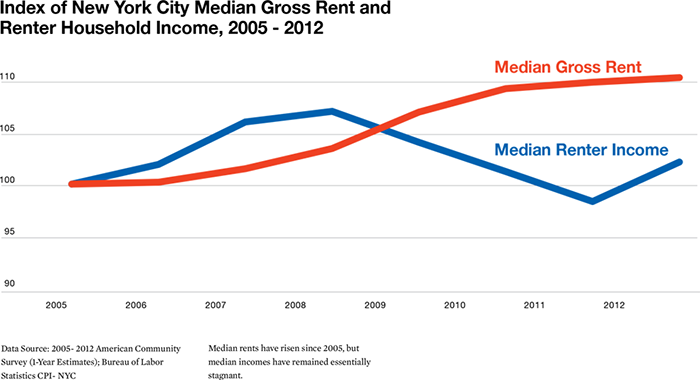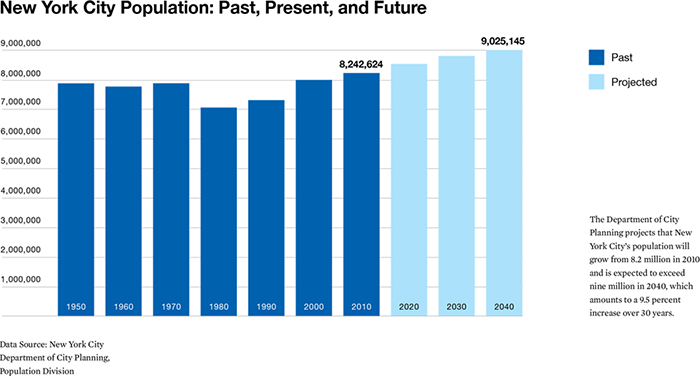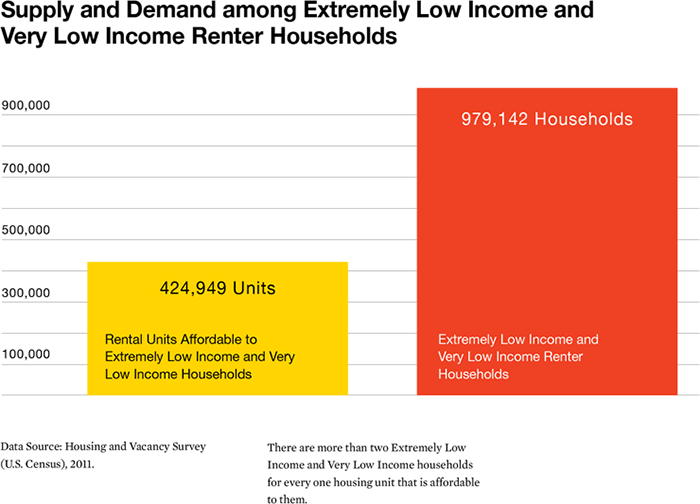
 Housing Plan311
Housing Plan311 Search all NYC.gov websites
Search all NYC.gov websites
Problem
Our current affordable housing crisis
Affordable Housing for Every New Yorker
Every New Yorker deserves a safe and affordable place to live, in a neighborhood that provides opportunities to get ahead. The market alone is not always able to meet that need, and, accordingly, governments at all levels must work together to help. Mayor Bill de Blasio has made affordable housing a top priority of his administration and has committed the City to "build or preserve nearly 200,000 affordable units, and help both tenants and small landlords preserve the quality and affordability of their homes."

New York City's shortage of affordable housing has reached a crisis point. The crisis has many causes, starting with the erosion of New Yorkers' purchasing power in the housing marketplace. Wages for the City's renters have stagnated over the last 20 years, increasing by less than 15 percent, after adjusting for inflation. During the same period, the average monthly rent for an apartment in New York City increased by almost 40 percent.

As a result, most New Yorkers now have limited options for housing and have to spend an unacceptably high share of their income just to put a roof over their heads, which means having too little left over for other basic needs. High rent-burden affects nearly every income group in every neighborhood across the five boroughs.

Another cause of the affordable housing crisis is the mismatch between demand for, and the supply of, housing.

This stems, in part, from the increasing desirability of calling New York home. For the first time in decades, more people are moving to or staying in the City than leaving: our older residents are aging in place rather than moving after retirement; our young families are remaining in the City rather than moving to the suburbs when their children reach school age; empty-nesters are returning to the City after their children are grown, and people are moving to the City from all over the United States, as well as all over the world. The attractiveness of the City is a hard-fought victory, and we must continue to retain and attract residents in order to prosper.
The private marketplace, however, has not produced enough housing for existing residents, let alone enough to accommodate the growth that the City has experienced. And, despite considerable public investment to stimulate the production of housing that is affordable to low- and moderate-income New Yorkers, the supply of publicly subsidized housing meets the needs of only a fraction of the people in those income groups.
The continued mismatch between the demand for affordable housing and its supply also exacerbates the rising income inequality that threatens the City's progress. When more than 50,000 New Yorkers sleep in homeless shelters and hundreds of thousands more struggle to pay high rents with meager earnings, the City fails to live up to its promise of opportunity.

